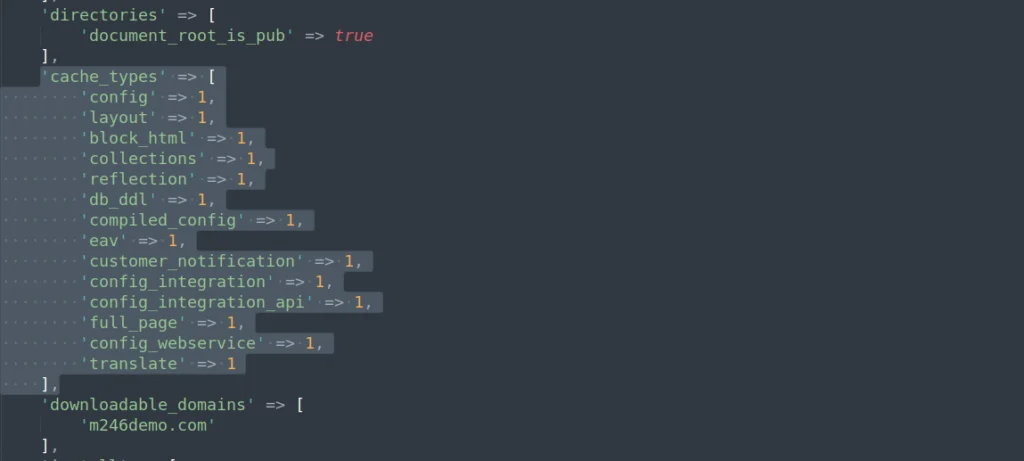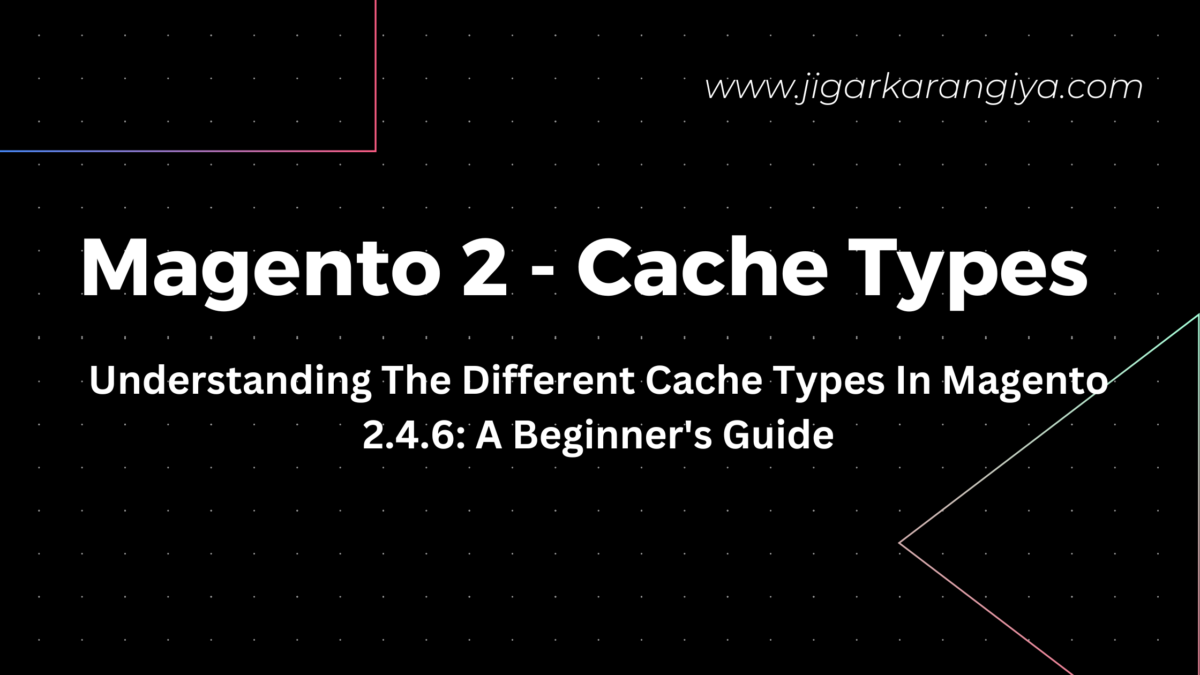Welcome to my Magento 2 blog Today, we’ll explore different cache types in Magento 2 and discover how they can make your store run faster.
Cache types in Magento 2 play a vital role in improving the speed and performance of your online store.
By caching various components, such as configuration settings, layouts, block output, collection data, and full pages, Magento 2 can serve content faster, resulting in a better user experience. So, Let’s take a closer look at each cache type and its real-time impact:
So, There are mainly 14 types of Magento 2 Cache that comes with Magento 2.4.6 which can lead to an effective score in improving the store speed.
To check available cache types in your Magento 2 instance you can check using the below command
php bin/magento cache:statusThis will output the available cache list with its unique Cache type code name and its status.

Also, you can also check these cache types using go through app/etc/env.php from your Magento instance and you will find it under cache_types.

- Configuration (config)
- The Configuration Cache stores the merged configuration settings of your Magento store. It helps speed up the loading of configuration data, such as system and module configurations.
- Example: Imagine you have a custom module that adds new configuration options to your store. When the Configuration Cache is enabled, these configuration settings will be loaded quickly, enhancing the overall performance of your store.
- Layout (layout)
- The Layout Cache stores the layout structure of your store’s pages. It helps speed up the rendering of page layouts and block structures.
- Example: Suppose you have a category page with multiple blocks, such as product listings, filters, and banners. When the Layout Cache is enabled, the layout structure of the category page will be cached, resulting in faster rendering and improved user experience.
- Block HTML output (block_html)
- The Block HTML Output Cache stores the rendered HTML output of individual blocks on your store’s pages. It helps reduce the processing time required to generate and display block content.
- Example: Consider a block that displays the “Recently Viewed Products” on your product detail page. When the Block HTML Output Cache is enabled, the rendered HTML output of this block will be cached, leading to faster loading times and improved performance.
- Collections data (collections)
- The Collection Data Cache stores the data retrieved from database queries. It helps speed up the retrieval of data collections, such as product lists and customer data.
- Example: Suppose you have a custom module that retrieves a list of bestselling products from the database. When the Collection Data Cache is enabled, the retrieved product data will be cached, resulting in faster loading times when displaying the bestselling products.
- DDL (db_ddl)
- The “db_ddl” cache in Magento 2 is like a quick memory for storing information about how the database is structured. It helps speed up actions like creating or changing tables and columns in the database.
- Example: let’s say you want to add a new category to your online store. When the “db_ddl” cache is enabled, Magento 2 remembers the necessary steps to create the new category in the database. So, when you add more categories in the future, Magento 2 can do it faster because it already knows the steps.
- Compiled Config (compiled_config)
- Entity attribute value – EAV (eav)
- Page cache (full_page)
- The Full Page Cache is a built-in caching mechanism in Magento 2 that stores the entire HTML output of your store’s pages. It helps deliver pre-rendered pages to users, reducing server load and improving page load times.
- Example: Let’s say a user visits your homepage. When the Full Page Cache is enabled, a pre-rendered version of the homepage will be served from the cache, eliminating the need for the server to generate the page from scratch. This significantly improves the loading speed and enhances the user experience.
- Reflection (reflection)
- Translations (translate)
- Integration configuration (config_integration)
- Integration API configuration (config_integration_api)
- Web services configuration (config_webservice)
- Customer Notification (customer_notification)
You can refer to the official Magento 2 dev Docsc document page to learn more about different cache types in Magento 2.
I hope this tutorial was helpful in understanding Magento 2 cache types and you have learned something new.
I will see you in the next tutorial. Happy Coding !!

Leave a Comment